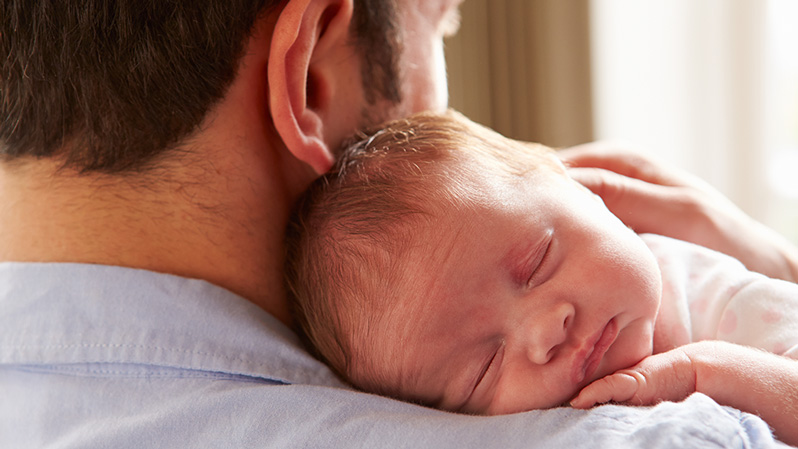New Article in the “European Journal of Population” | 18.02.2021How Does Fertility Differ in Men and Women?
For the first time a new study has provided data on male fertility patterns in 17 economically highly developed countries. The findings show that men have children much later in life than women on average. The extent to which female and male fertility differ in terms of the number of children and the average age of the parents at the time of the births has so far only been determined imprecisely. Moreover, only a few studies exist on the question of whether men postpone births to a later age in the same way as women.
 Source: © Monkey Business / Adobe Stock
Source: © Monkey Business / Adobe Stock
Problematic data
The research is complicated by the lack, or poor quality, of corresponding data on male fertility. For example, there are gaps in the data on fathers’ ages at the time of their children's births. Some existing studies on this topic are based on birth register data and focus primarily on individual countries. Even if the birth register data is of higher quality than survey data, the information on fathers is still incomplete.
New data set on male fertility
In order to fill these research gaps, BiB researcher Sebastian Klüsener in collaboration with Christian Dudel (Max Planck Institute for Demographic Research, Rostock) have presented a new study which contains the first ever comparative data set on male fertility trends for 17 economically highly developed countries. It includes data from North America, Europe, Asia and Oceania. “To investigate how and why male and female fertility differ, we used uniform methods to determine annual age-specific fertility rates for males based on live birth rates. We published the results in the Human Fertility Collection database,” explains co-author Klüsener.
The analyses focus on fertility differences with regard to births per man (TFR) as well as the average age of fathers at the birth of their children, and the development of these parameters in the last few decades. “This is the first paper to systematically describe fertility differences between men and women on the basis of such macro indicators,” emphasises the demographer.
Major disparities in the age differences of fathers and mothers
The analyses show that men have children much later than women on average. However, there are sometimes considerable disparities between different countries. The difference between the average age of fathers and mothers at the birth of their children varies in the countries considered, ranging from less than 2 years in Japan to more than 3.5 years in Italy and Hungary. The differences are much greater, however, in economically less developed regions such as West Africa.
Explanations
But what lies behind this phenomenon? Sociological and evolutionary approaches feature prominently in the research. Sociological approaches can be useful in explaining the differences in that, for a long time, women had fewer opportunities for social advancement than men. As a result, a man's social status played an important role in the partner selection process. Older men have an advantage here, as their social status is often more secure than that of men of the same age as the woman, or even younger.
Evolutionary approaches, on the other hand, emphasise how women invest more direct biological resources in their offspring than men through pregnancy and breastfeeding. This tends to give younger women an advantage, as the biological ability to have children declines with age.
Substantial diminution in age differences over time
Do these age differences decrease over time? This is a valid assumption in view of the increasing gender equality, says Klüsener. Furthermore, the effect of increased age as a limiting factor on pregnancies is decreasing as the result of advances in modern reproductive medicine. The findings of the study point in a similar direction. The average ages of mothers and fathers at their children's birth have recently converged in many countries, for example. The only exceptions in the study are some East European countries and eastern Germany, where the age gap between fathers and mothers has widened in recent decades.
Consequences of age differences for equal opportunities
The age differences between mothers and fathers are also important in the context of equal opportunities between the sexes. After having children, couples often realign their division of tasks as a result of the great deal of care and attention that children need, especially in the early years. For many couples, this means that one or both parents take a break in their career. “The older parent, and thus in many cases the man, can usually point to being more firmly established in their career. This is one reason why it is often the woman who puts her career on hold,” explains Sebastian Klüsener. This phenomenon of re-traditionalisation is relatively widespread in Germany, especially in western Germany. “Such processes at the couple level can contribute to the slow pace of change in traditional role patterns for men and women.”
Dudel, Christian; Klüsener, Sebastian (2021): Male–Female Fertility Differentials Across 17 High-Income Countries: Insights From A New Data Resource. European Journal of Population (online first).
